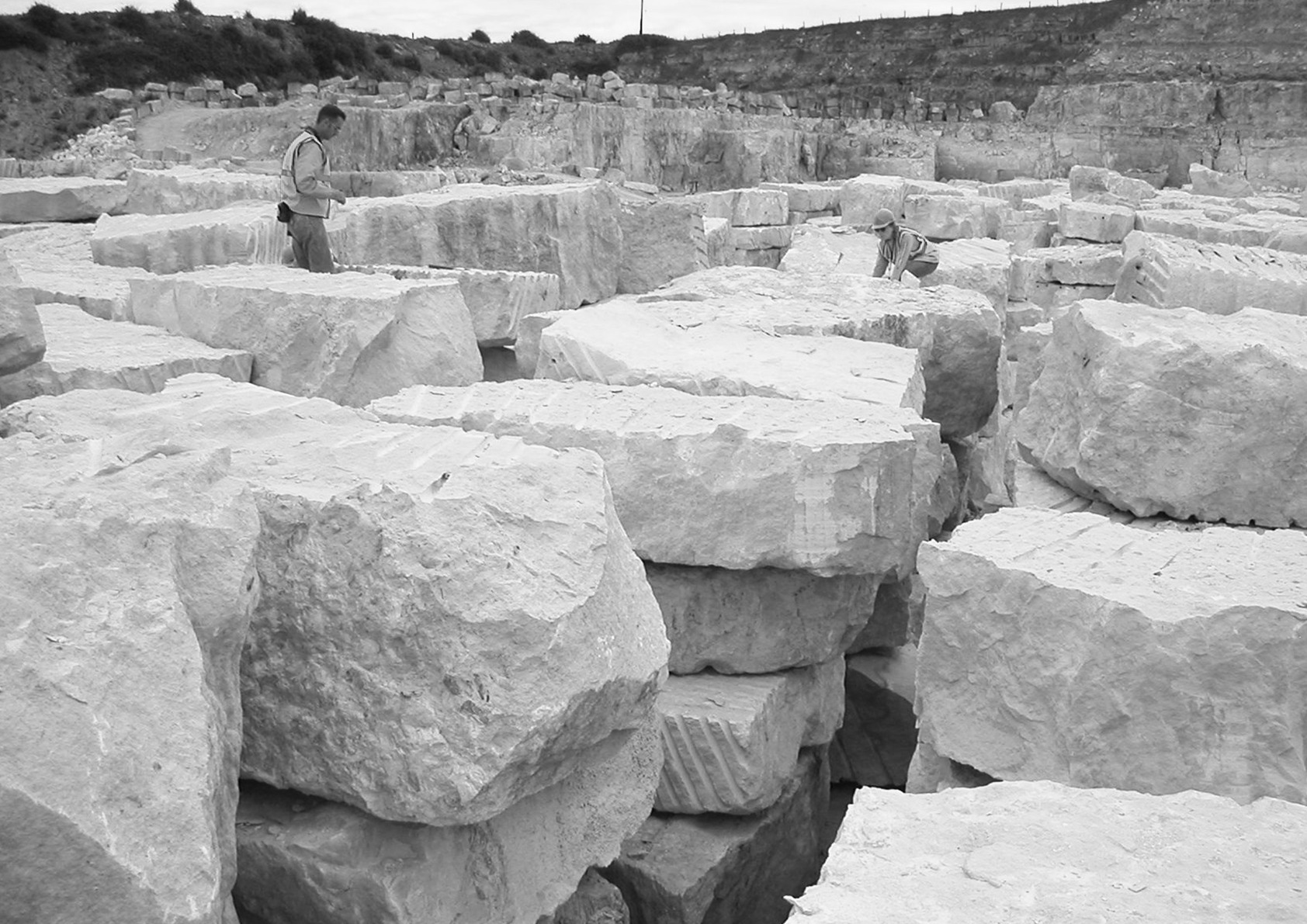Steve Webb of Webb Yates Engineers has produced a learning module on stone for School of Specification. Here, he explains how the potato/tomato line provides a clue as to how stone construction might be developed in the UK.
You’ve been involved in a number of conceptual installations exploring the structural and aesthetic possibilities of stone. What did you hope to achieve? And did it work?
We wanted to show how easy it is to make a stone beam that does what a steel or concrete beam does with a fraction of the carbon footprint….and I think we did!
What’s the quick riposte to the perception that stone construction is prohibitively expensive?
Fussy decorative stone is expensive. We’re talking about industrial grade stone. We don’t care about the colour or the finish we just need the stone to be strong. Quarries have huge amounts of waste because the stone comes out the wrong colour. We want to use that.
Is structural stone a viable option for low-cost high-volume projects?
One day it can be. Consider a steel beam in a new building. The iron ore was dug up in the middle of Australia, passed through a magnetic concentrator, shipped to the coast in trucks, sent on a ship to China, turned into sinter, put through a blast furnace, blended in an oxygen furnace, sent to a hot strip mill, then sent to a rolling mill to be turned into I sections, then shipped to the UK, cut and fabricated in a fabrication shop then sent to site. This is allegedly cheaper than wire cutting a block of limestone in a local quarry, into rectangular blocks, drilling holes in them and threading a reinforcing cable through and tensioning the cables on the quarry side, then sending it to site.
Can you summarise your interpretation of the potato/tomato theory and the implications for the future of construction in the UK?
This is very glib, I have to admit. The potato tomato line divides Europe between tomato eaters in the south and potato eaters in the north. This is because it also divides the hot southern places and the northern cold places. Stone cools you down while wood keeps you warm so I like to think it also divides stone buildings in the south and wood buildings in the north, possibly built by catholic stone masons and protestant wood workers. In Britain we are not quite potato not quite tomato, historically not quite catholic not quite protestant and not quite wood not quite stone. We don’t have enough stone for the massive stone construction like the ibavi housing in Mallorca or Giles Paraudin in south of France but we dont have enough wood to make our own CLT. We (Webb Yates) have been experimenting with an architectural language for us. A not quite wood, not quite stone hybrid construction of wooden joists working compositely with thin stone floor slabs. The system is light, uses a little stone and a little wood, and has just enough thermal mass to avoid air conditioning in our not quite hot not quite cold climate.
Do we have the skills to deliver a step change in the use of stone as a structural building material?
Yes! It’s really not very complex to make. But we need to invest in R&D and writing codes of practice for design and manufacture.
You have made the case that, by taxing labour rather than materials or carbon, our fiscal system exacerbates the cost of low-carbon labour-intensive projects and encourages projects that are over rationalised and carbon hungry. Are there any economies that have successfully implemented a more successful tax regime?
In Kenya today stone blocks cut from quarries are cheaper by volume than concrete possibly because informal labour at quarries isn’t effectively taxed but cement importers/butchers can’t avoid tax so easily. Thinking more about a problem can save energy in its resolution. But fundamentally we have lots of under-utilised labour in the world and we overuse material and energy. Why not turn the tax dial a little and rebalance that?
Source: Architecture Today

